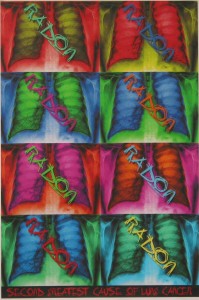What is Radon and why test for it?
Radon is a radio active gas produced through the decay of uranium. It’s odorless, tasteless,
and invisible. Radon can be unknowingly be present in your home at unsafe levels. A simple radon test can measure the level of radon in your home. If high radon levels are found it is easy and not very costly to reduce.
Radon enters homes through hollow block walls, cracks, voids or holes in foundation floors and walls, and sump pits. It can also enter through the water supply and be brought in with stone building materials, such as granite countertops.
The U.S. Surgeon General, U.S. EPA and the PA DEP, each recommend all homes be tested for radon.
The US Surgeon General warns radon is the second leading cause for lung cancer in the United States. Combined with smoking your cancer risk increases substantially.
Indoor radon is the second leading cause of lung cancer in the United States and breathing it over prolonged periods can present a significant health risk to families all over the country. It’s important to know that this threat is completely preventable. Radon can be detected with a simple test and fixed through well-established venting techniques.” US Surgeon General, January 2005.
What are the chances my home has radon?
About 40% of all PA homes have radon levels greater than the EPA acceptable guideline of 4.0 pCi/L and the in our area the percentage is higher.
Zone 1 (red) counties on the map have the highest potential of having a radon level greater than 4.0 pCi/L (pico curies per liter).
Zone 2 (orange) counties on the map have a predicted average indoor radon screening level between 2 and 4 pCi/L
Pennsylvania has some of the highest average Radon levels in the country.
How do you test for Radon?
There are various acceptable methods to test for radon. The Home Inspection Guru uses EPA/DEP approved continuous recording monitors (CRM’s) for testing. For real estate transactions we place the test for 48 hours. Results are delivered electronically the same day but occasionally/rarely take up to 24 hours after retrieving the test.








